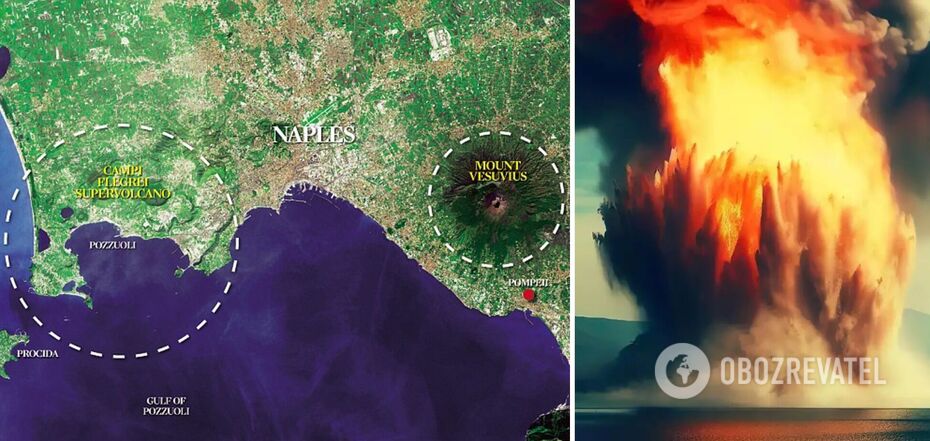Life
Italy's Campi Flegrei supervolcano, which last erupted almost 500 years ago, may erupt
Europe's largest dormant supervolcano, Campi Flegrei, located in southern Italy, may be preparing for its first eruption in almost 500 years. Scientists have recorded that the volcano has become weaker and more prone to rupture, although this does not guarantee an eruption.
This is stated in a study by scientists from the University College London and the Italian National Research Institute of Geophysics and Volcanology (INGV), published in the journal Communications Earth & Environment.
The supervolcano is located in southern Italy, west of Naples. Unlike traditional volcanoes, it is not a mountain but a gentle depression 12-14 km across and is known as a caldera. The town of Pozzuoli, home to more than 80,000 people, is located around the Dormant Volcano.
The last eruption of this volcano occurred back in 1538, but the last 70 years have not been very calm for it. Long bursts of unrest were observed in the 1950s, 1970s and 1980s.
According to SciTechDaily, scientists have also observed a slightly slower phase of unrest over the past decade, during which tens of thousands of small earthquakes occurred, causing the city of Pozzuoli to be raised by almost 4 metres. In April 2023 alone, scientists recorded more than 600 earthquakes of varying magnitude. This is the highest monthly figure since Campi Flegrei was monitored.
The lead author of the study, Professor Christopher Kilburn, says that the new research shows that Campi Flegrei is approaching rupture. However, the mere fact of rupture does not mean that an eruption will occur. For this to happen, the rupture must coincide with a place where magma will be actively pushed out.
Dr Nicola Alessandro Pino from the Vesuvius Observatory, representing INGV in Naples, said the study results show that parts of the volcano are becoming weaker and "it could collapse".
In the study, the researchers note that the effect of the disturbance since the 1950s is cumulative, meaning that a possible eruption may be preceded by relatively weak signals, such as a lower rate of ground rise and fewer earthquakes. This was the case with the 1994 eruption of the Rabaul caldera in Papua New Guinea, which was preceded by minor earthquakes that occurred at a frequency ten times lower than during the crisis a decade earlier.
However, researchers note that an eruption is not inevitable. Dr Stefano Carlino of the Vesuvius Observatory believes that Campi Flegrei can adapt to a new regime of slow rise and decline, as is seen in similar volcanoes around the world. However, he urges the community to be prepared for "any development".
Earlier, OBOZREVATEL reported on a study by scientists that found that two mass extinctions millions of years apart that occurred during the Middle Permian period were caused by powerful volcanic eruptions and the global warming that followed.
Subscribe to OBOZREVATEL's Telegram and Viber channels to keep up with the latest news.



























